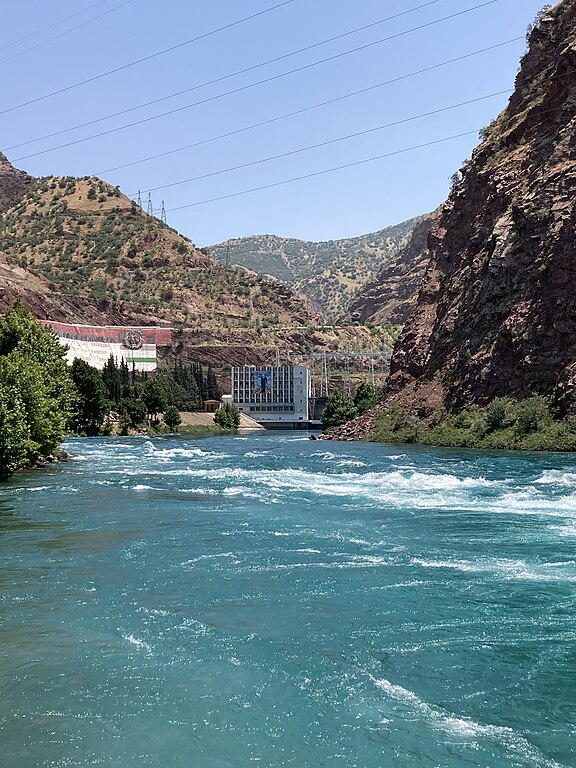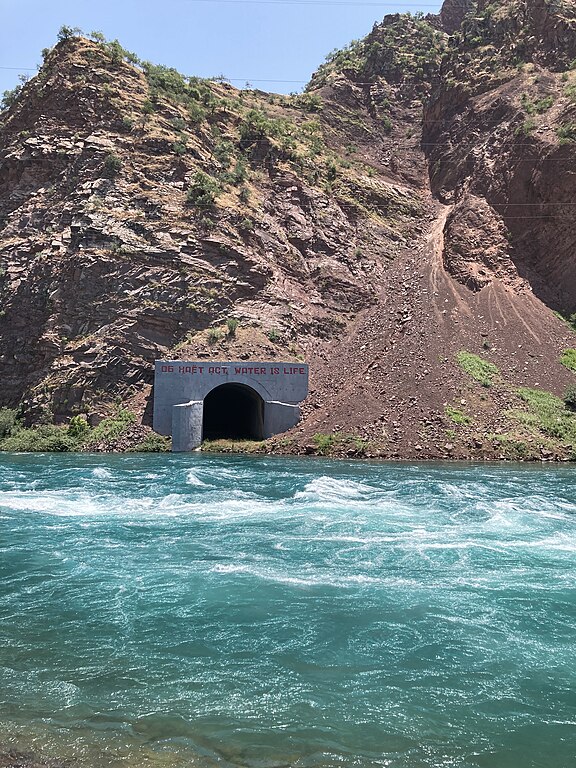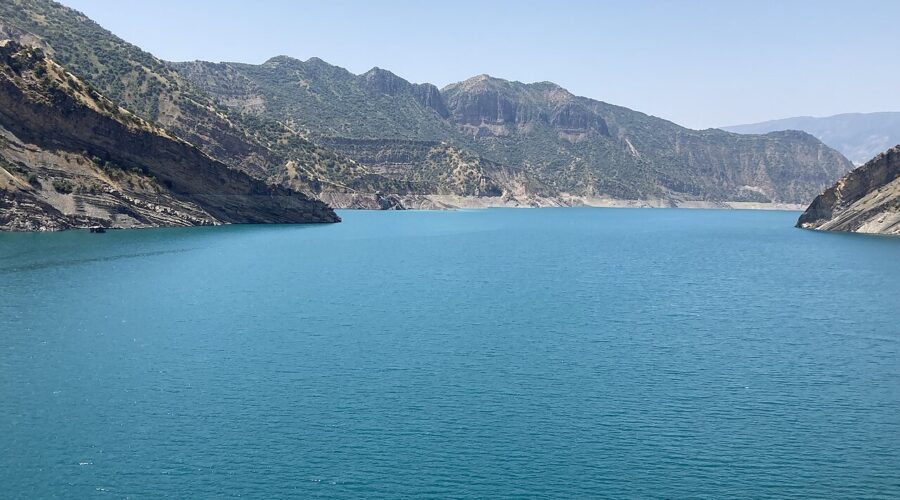The vast majority of passengers were participants in the Dushanbe Water Process – a high-level conference on water policy and sustainable development. As such, we got “VIP treatment” at the airport. We were escorted to the airport’s VIP lounge that looks more like an old Soviet provincial – though well-maintained – train station.
Even though we were “VIP guests”, we waited for almost two hours for the airport staff to bring us our luggage. Later I learned that time in Tajikistan is very relative. If someone tells you that they will meet you at 11 AM, that could also be at 11:30, 12, or never.

Indeed, things in the Central Asian nation seem to be easy-going. Tajikistan is a traditional society where more than 73 percent of the population lives in rural areas, mostly in the mountains. People live very simple and relaxed lives and are extremely friendly and hospitable.
While men in Tajikistan generally dress the same way as in the West, women mostly retain traditional elements of clothing. The government, however, advises against both overtly Western and Islamic wear. Even though 96-98 percent of the population follows Islam, the authorities are trying to assert a more secular but traditional culture. The Central Asian nation has recently banned wearing “foreign clothing” – including hijab – in the country, allegedly aiming to protect the Tajik cultural identity.
Tajikistan is located in the heart of Central Asia, bordered by China to the east, Uzbekistan to the west, Kyrgyzstan to the north, and Afghanistan to the south. Dushanbe sees the Taliban-ruled “Graveyard of Empires” as the greatest threat to Tajikistan’s national security, which is why it seeks to eliminate any form of radical Islam in the former Soviet republic.
Tajikistan is a country worth exploring for those interested in breath-taking natural scenery. With more than 1300 natural lakes and almost a thousand rivers, the Central Asian state has abundant fresh water; it is sometimes referred to as the “House of Water”.
The former Soviet republic is very rustic, offering lakes, mountains, and waterfalls. But in spite of that, very few tourists visit Tajikistan and the airport in Dushanbe sees an average of 20 flights per day. The infrastructure in Tajikistan is not developed enough to support the tourism industry.
Although the authorities would love to see millions of foreigners visiting Tajikistan, they are quite aware that the country lacks hotels and skilled labor. That is why they hope to see foreign investment in the Tajik hospitality industry. But what seems to worry them more is the fact that in the West Tajikistan is often portrayed as an “unsafe country.”
“Terrorist attacks in Tajikistan can happen with little or no warning, with terrorists targeting public areas such as tourist locations, transportation hubs, markets, shopping malls, restaurants, places of worship, school campuses, and government facilities,” the State Department said in a travel advisory in November 2023.
In reality, Tajikistan is a very safe place, and the authorities often take security measures too seriously. When we traveled the country to see its natural beauty, as well as hydropower plants, we were escorted by dozens of police officers and members of the Tajik secret service. They cared so much about our safety that they did not let us swim in the extremely clean Vakhsh River near the Nurek Dam – the second tallest man-made dam in the world – fearing that the water was too fast-moving and too cold.
“I decided to come here hoping that they would allow us to swim,” a Canadian delegate, participating in the Dushanbe Water Process, told me while we were standing barefoot in the Vakhsh.
Later, accompanied by a Tajik official, I took a dip in the equally cold and fast-moving Varzob river, in the mountains some 30 kilometers from Dushanbe. He could not believe that I would dare to enter the ice-cold river.
“Do locals ever swim here?”, I asked him.
“Only when they’re drunk,” he replied.
Despite being Muslims, many Tajiks I got to know – especially in Dushanbe – drink alcohol. And they drink a lot. Vodka seems to be their favorite drink, but I doubt they swim in the Varzob river. It’s way too cold.

Water temperatures in most Tajik rivers, even in summer, are rarely above five degrees Celsius. That, however, does not mean that the country cannot develop nautical tourism. If it only had money. Officially, Tajikistan is the poorest country in Central Asia, and is heavily dependent on remittances from Russia, where millions of Tajik migrants live and work.
Tajikistan is a predominantly agricultural economy, with almost no heavy industry. It is also a cash economy, which is why it is very difficult to find a store that accepts credit cards. More importantly, Tajikistan is very cheap, at least from the perspective of an ordinary European tourist. An average taxi ride in Dushanbe costs around one US dollar and most taxi vehicles are Chinese-made electric cars.
Although there are traffic police on every corner, traffic rules (or at least their implementation) in Tajikistan seem to be very liberal. It is quite common to see drivers making a U-turn across a double yellow line, or police helping pedestrians cross the street outside of a crosswalk.
Despite the fact that 93 percent of Tajikistan is mountainous, most major roads are in good condition. Driving through the breath-taking gorges, hills, and high mountains is an unforgettable experience. But what foreigners, not knowing much about the political situation in the Central Asian state, can find surprising is billboards with pictures and quotes of President Emomali Rahmon – who has been ruling the country for 30 years – virtually everywhere. He is on every school building, on every mountain, near every lake, river, or stream.
Despite being the only European journalist covering the Dushanbe Water Process, I did not have the opportunity to sit in the same conference hall with the Tajik leader. Instead, I was put in the press room with dozens of Tajik journalists, and only two foreign correspondents – one from Japan, and one from South Korea. Later we attended Tajikistan’s Prime Minister Kokhir Rasulzoda’s press conference, but there was no room to ask any questions. By contrast, we were interviewed by our Tajik colleagues all the time. They wanted to know what we think about their country.
The landlocked Central Asian state has a rich history and culture, and possibly the most beautiful nature in the world, but it remains unexplored and relatively closed. It is, therefore, considered to be “exotic”. And that is what makes Tajikistan so unique and interesting.
Images: Nikola Mikovic

